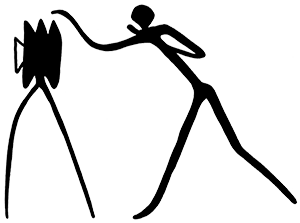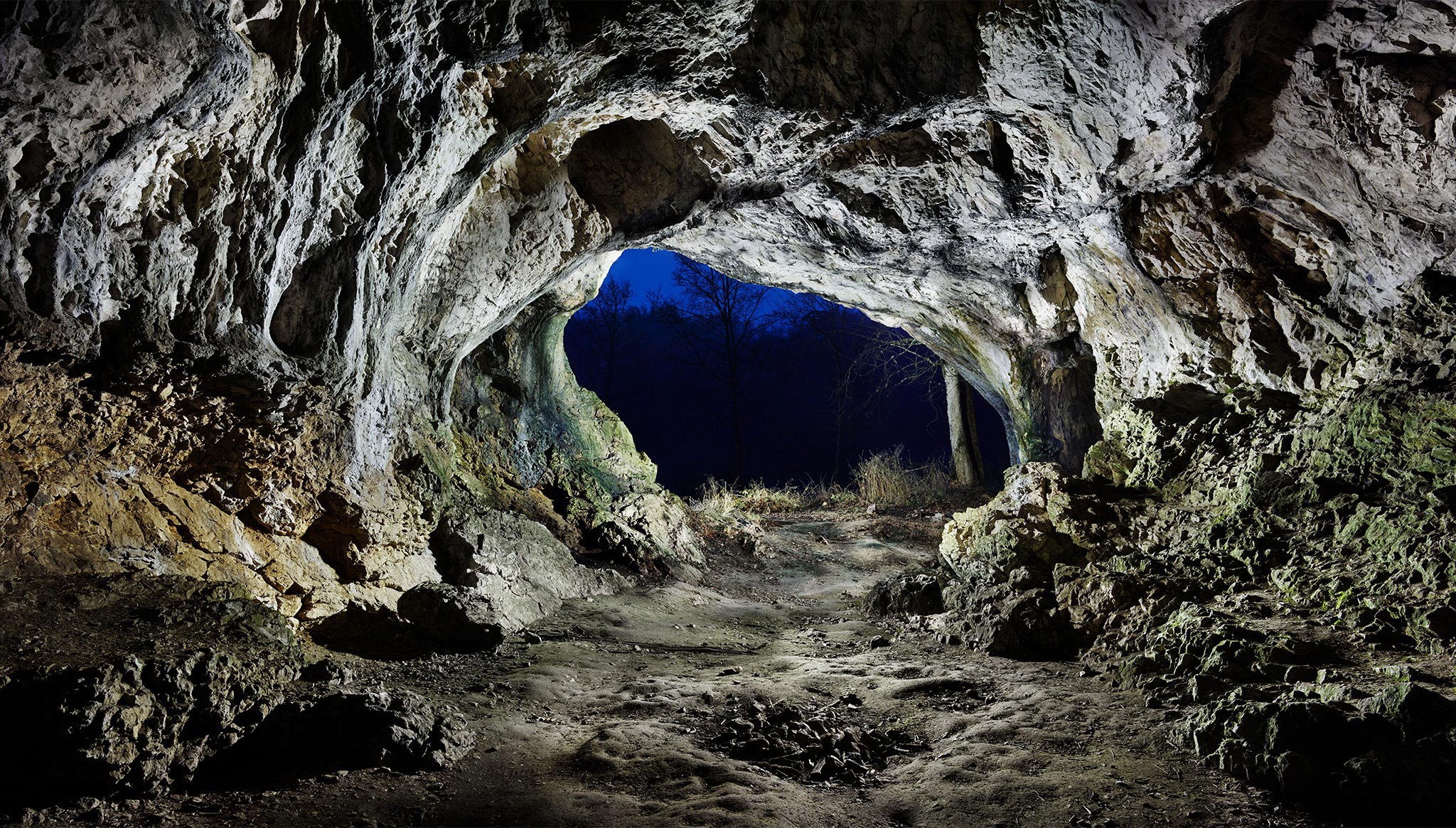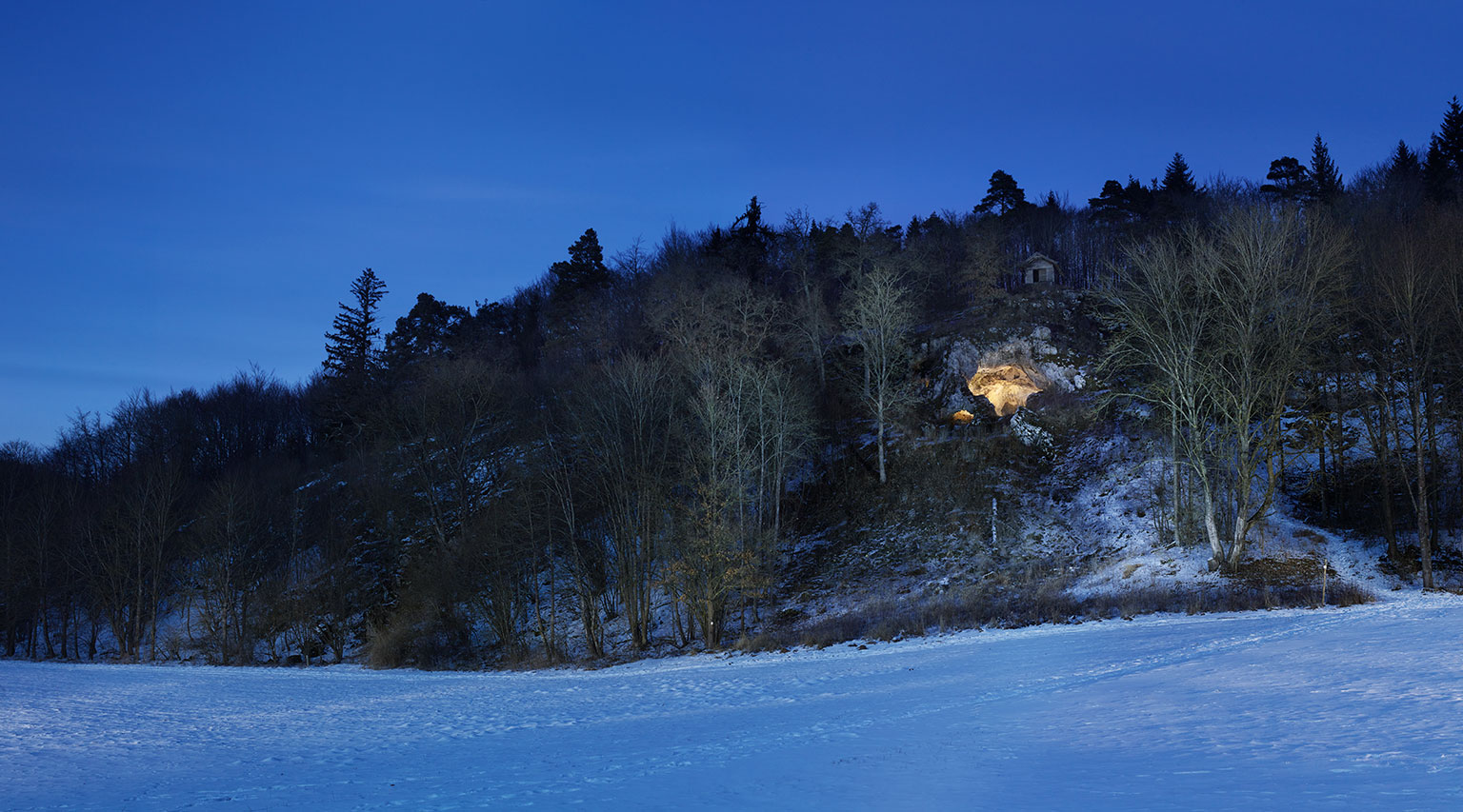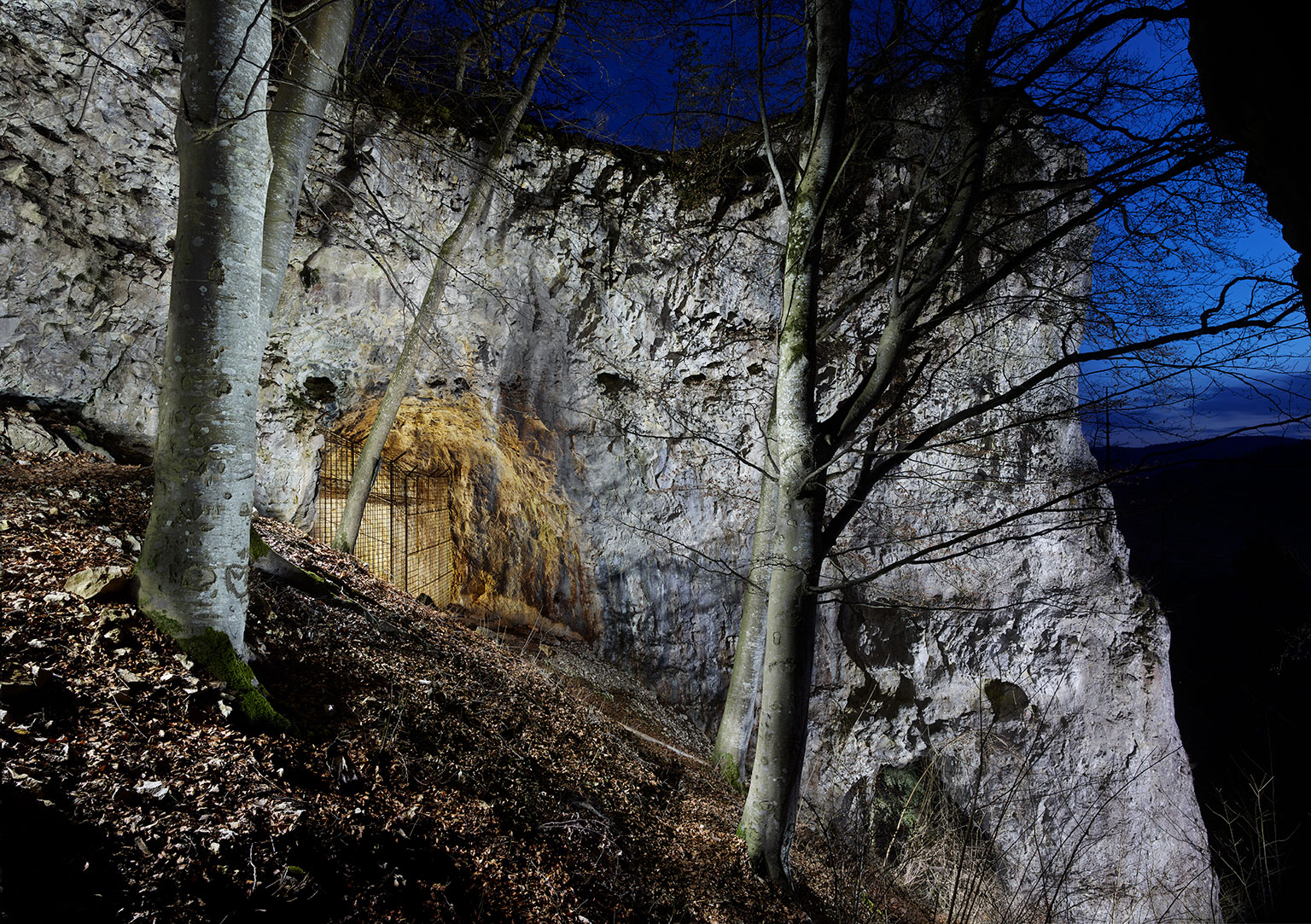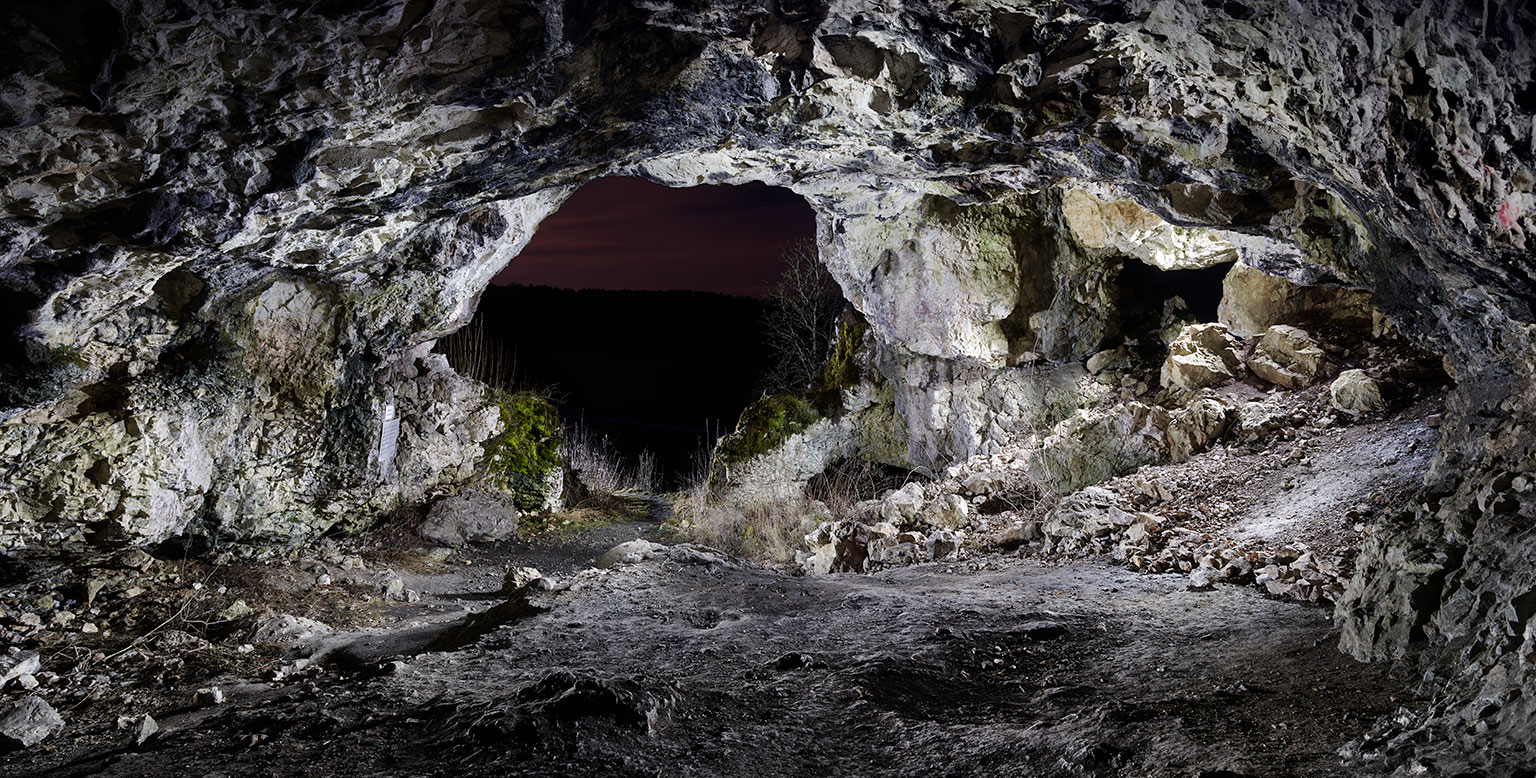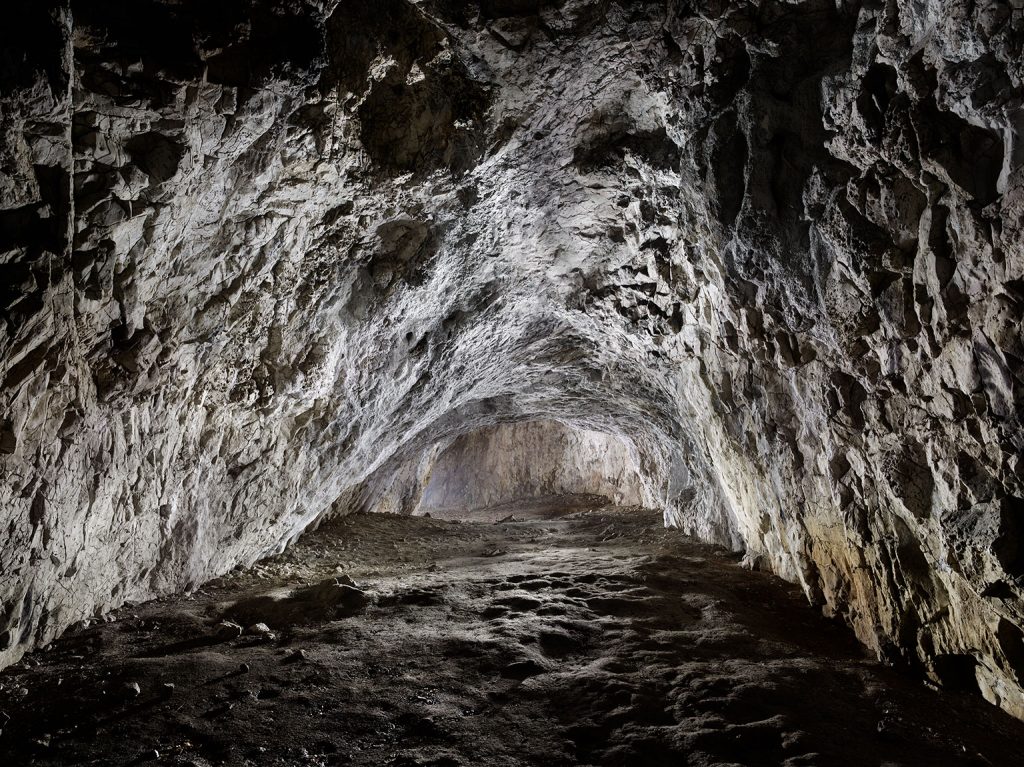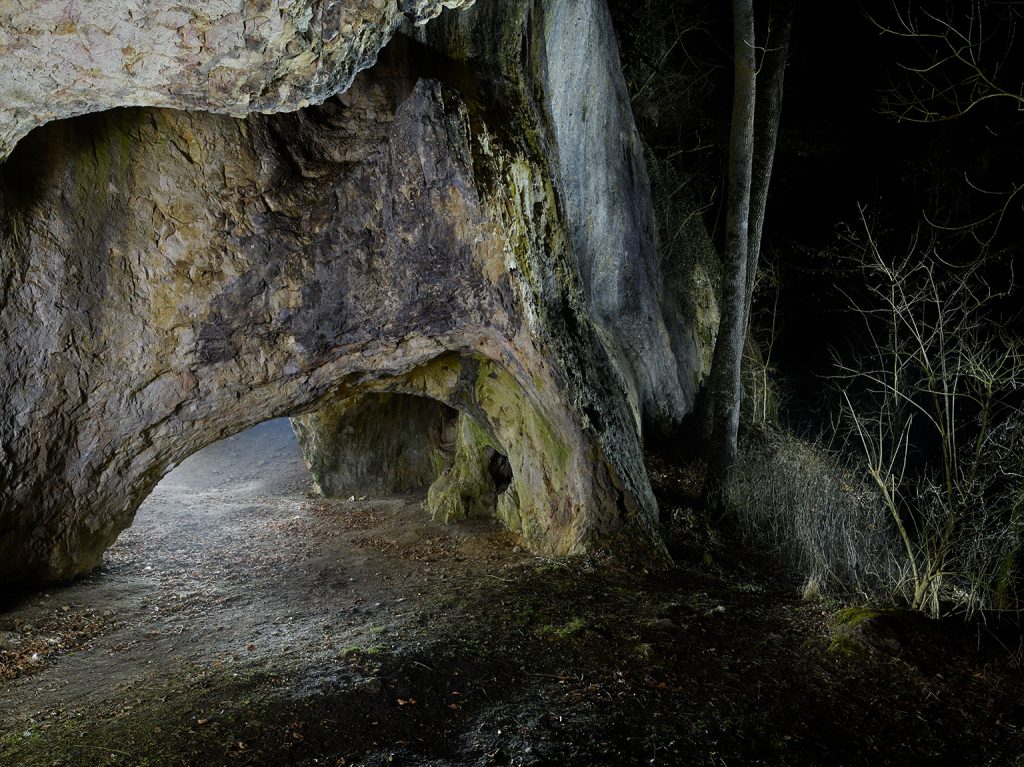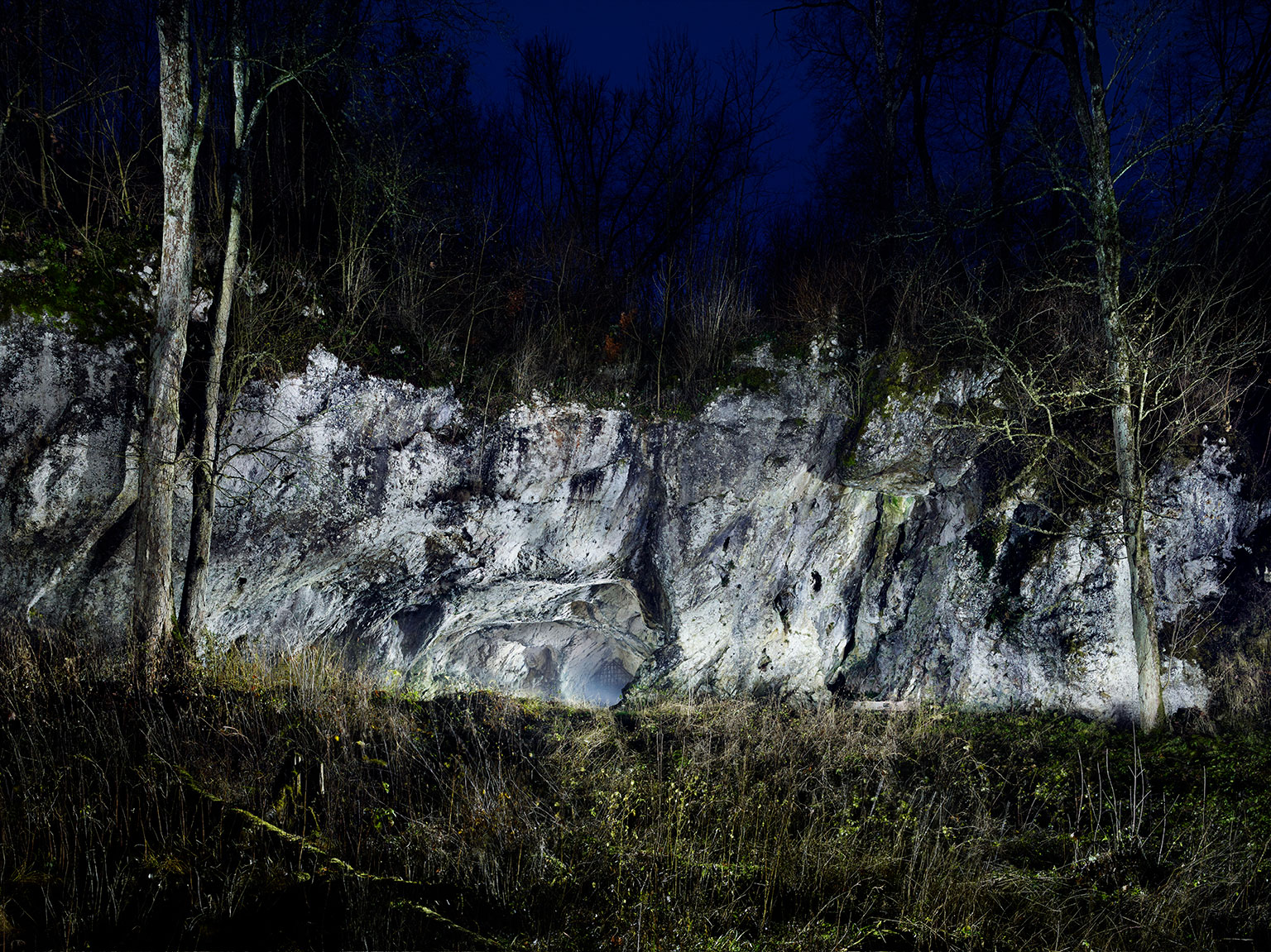Die Erfindung der Kunst
The Invention of Art
In sechs Höhlen im Lone- und Achtal auf der Schwäbischen Alb bei Ulm wurden die ältesten Kunstwerke der Menschheit gefunden. Sie sind zwischen 35000 bis 43000 Jahre alt. Geschaffen wurden diese von jenem modernen Mensch, der vor mehr als 35.000 Jahren während der letzten Eiszeit entlang der Donau nach Mitteleuropa kam.
Es war eine nicht-sesshafte Jäger- und Sammlergesellschaft. Gletscher bedeckten Nordeuropa, Berlin, den Bodensee und reichten bis zur Donau und neben dem Homo Sapiens lebten parallel die Neandertaler.
Die Menschen sammelten nicht nur Nahrung, sondern auch Wissen. Ohne diese hätten sie in ihrer Umgebung nicht überlebt. Die damaligen Menschen hatten umfassende und vielfältige Kenntnisse über ihre Umwelt – mehr als die meisten modernen Menschen heute.
Die Höhlen und die Funde dokumentieren auf außergewöhnliche Weise die Schöpferkraft des modernen Menschen.
Die ersten Bilder der Höhlen fotografierte ich schon vor über 15 Jahren. Damals waren viele Höhlen noch von Bäumen und Sträuchern verdeckt und kaum zu sehen. Auf den Höhlen grillten die Leute und vor den Höhlen standen Mülleimer.
In den letzten Jahren wurden Bäume vor den Höhleneingängen gefällt, an der Vogelherdhöhle entstand der Archäopark und heute sind die Höhlen Teil des UNESCO Welterbe.
